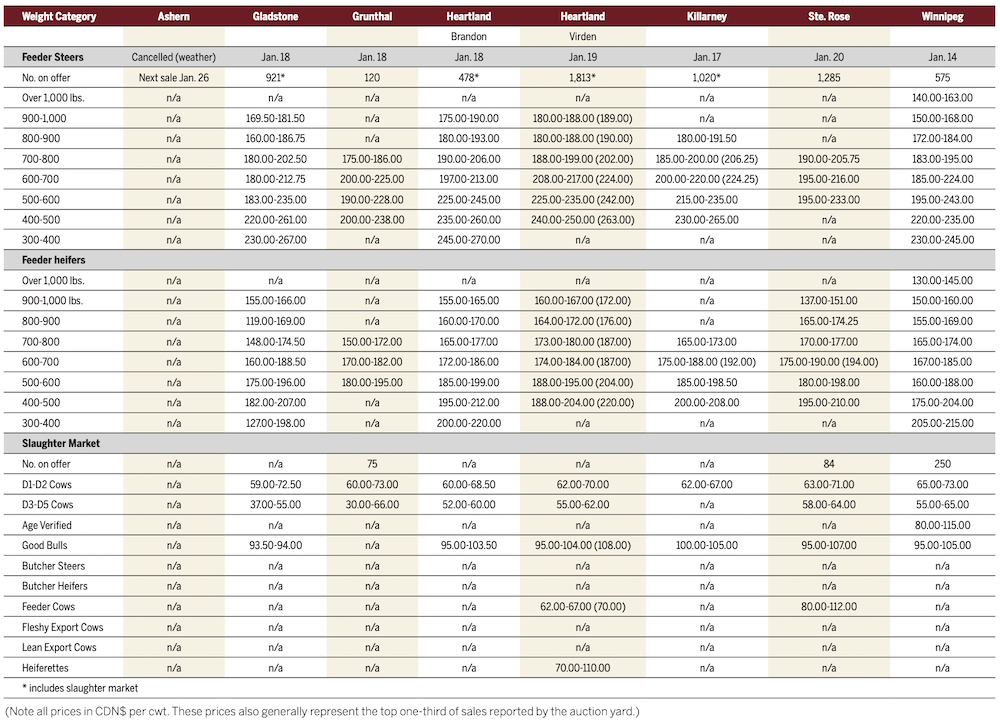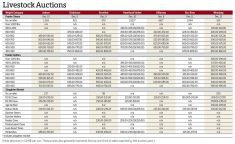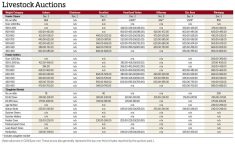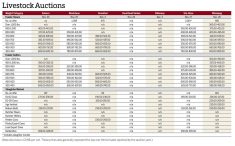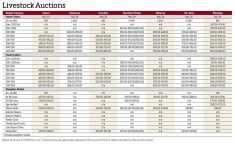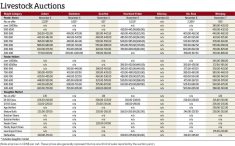Wind chills dropping to below -40 C, followed by snowstorms and poor road conditions, did little to stand in the way of cattle sales in Manitoba during the week ended Jan. 20.
Despite the Jan. 19 sale at Ashern Auction Mart being cancelled due to poor weather, 6,621 cattle went through the rings at seven other sales during the week. The total marks a 63 per cent increase from 4,057 cattle the week before (also excluding Ashern).
“Even considering the weather, we still ended up with (921) cattle to sell (on Jan. 18),” said Gladstone Auction Mart auctioneer Tyler Slawinski. “We had some really good-quality cattle this week. The heavier cattle are starting to make their way through the ring.”
Read Also
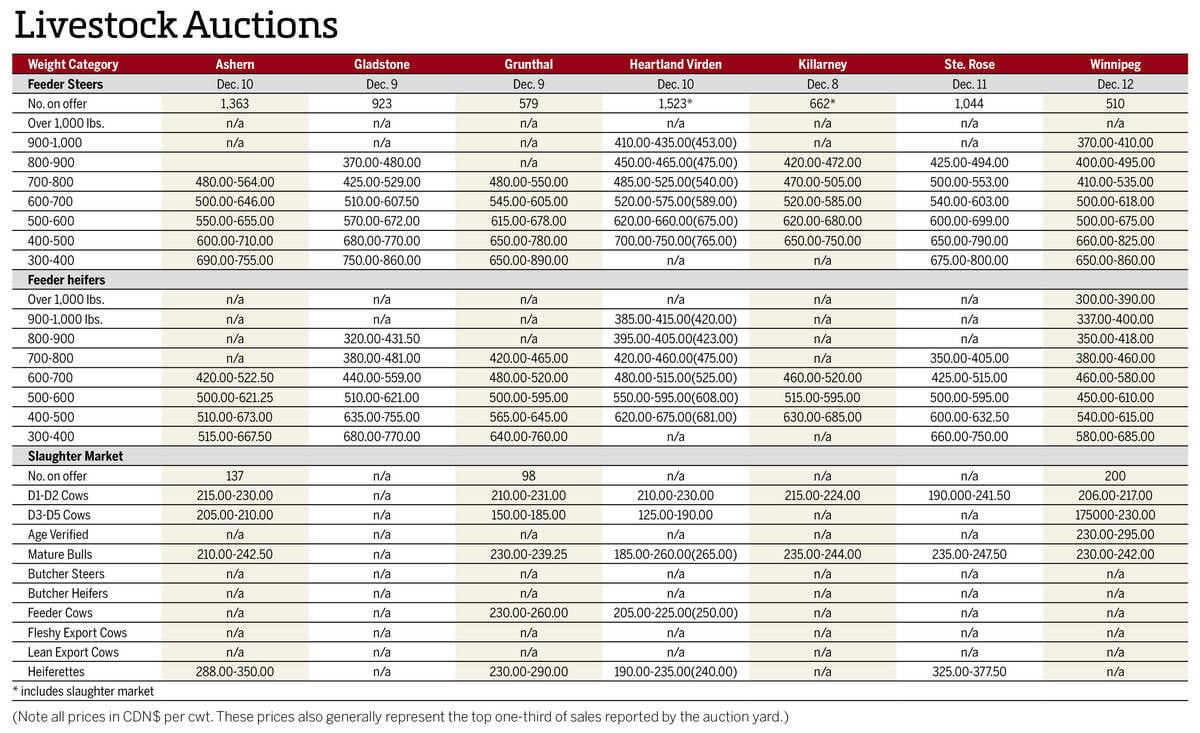
Manitoba cattle prices Dec. 16
Here’s what local farmers were getting paid last week for their cattle at Manitoba livestock auction marts; prices covering the week Dec. 8-12, 2025.
Prices for heavier feeder steers decreased a few dollars in some places and feeder heifer prices saw a slight increase in the lightweights with the highest price at $220 per hundredweight, compared to $215/cwt for the previous week. D1 and D2 cows were sold at a range of $59-$73/cwt this week, compared to $62-$74 the previous week.
“The heavier cattle were definitely softer — five to nine cents (lower) than the initial first week we started. I would say that was due to the Canadian dollar being stronger and the cattle futures being a little bit more on the negative side,” Slawinski said.
On the Chicago Mercantile Exchange (CME), February live cattle closed at US$138.325/cwt on Jan. 20, one of the high points in a 10-day rally, raising prices by US$2/cwt. Meanwhile, the March feeder cattle contract closed at US$164.95/cwt on Jan. 20, US$4.50 lower than at the beginning of the year.
The Canadian dollar closed at 80.17 U.S. cents on Jan. 20, its highest level against the greenback since Nov. 10, 2021.
Adding to price pressures, according to Slawinski, is insufficient labour at meat-processing plants due to increasing cases of COVID-19.
“(They) are only running half their shifts or definitely running less processing shifts due to COVID-19 kicking in again and not being able to have employees to run full shifts,” he said.
Nevertheless, Slawinski added, plenty of cattle are going to Eastern Canada.
“Lots of cattle are still moving east. Lots of cattle were moving south (into the U.S.) and probably still are, but with that 80-cent dollar, maybe there has been a halting start over there,” he said.
“I expect to see a consistent run of cattle over the next few weeks,” he added. “We’ve got more bred cow sales coming ahead. Some guys are still deciding to either retire or decide it’s time to sell bred cows. I’m thinking there are a lot of positives in the cattle industry as long as we can get the politics out of it.”


